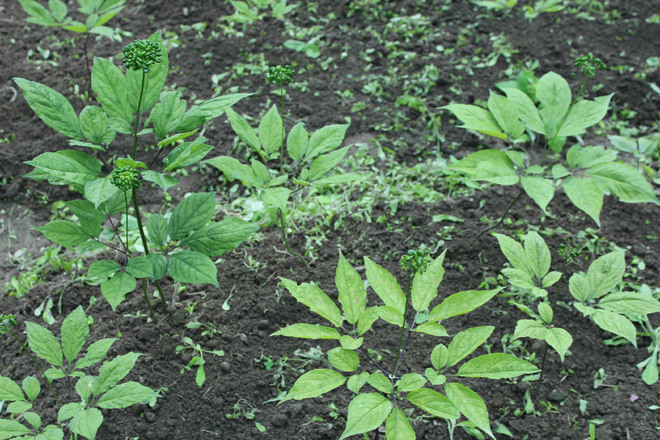Ginseng plantation in Lahaul
Lalit Mohan
Tribune News Service
Dharamsala, March 25
The Institute of Himalayan Bio-resource Technology (IHBT), a CSIR centre at Palampur, has started the plantation of Chinese ginseng, a plant of high commercial value in cold deserts of Himachal.
Acting director of the institute Anil Sood said the plant had high commercial value in national and international markets due to the aphrodisiac properties in its roots. The IHBT provided bulbs of the plant to farmers in Lahaul. The plants are in the second year of growth now and these can be exploited for commercial value in the third year. Besides selling the roots of the plant, the farmers can also have the seeds of plants for further cropping, Sood said.
He further said there was no dearth of market of ginseng as it was used in traditional and modern medicines. Only Korean ginseng was available in the Indian market. However, the Chinese ginseng was considered to have more commercial value and so the IHBT had introduced it in Himachal.
Sood said many rare herbs growing naturally in high-altitude areas of the state had gone rare due to its over-exploitation. Picrohiza kurroa, known as kutki, was used for protection of liver. It was used in most drugs as Liv 52 manufactured for protection of liver. Most people were uprooting the plant as it was earlier believed that piclocite, a compound that had liver protection properties, was found in the root of the plant. The plant had gone so rare that it had been categorised in rare and threatened category by the IUCN, he said.
“The research, conducted by the IHBT, has now established that there is certain amount of piclocite even in the leaves of the plant. We are now advising the farmers to just extract the leaves of the plant so that it can be preserved in the wild,” he said. The IHBT had also put in efforts to restore the plant in wild areas above 8,000 feet in Himachal and Uttarakhand. A centre in the Shansha area of Lahaul had been established to achieve this objective, the acting director of the IHBT said.
Another herbal plant, podophyllum hexandrum, also known as ban kakri, was common in high-altitude areas of Himachal. The plant was known for its anti-cancer properties. Since its roots were used for medicinal properties, it was rare due to over exploitation, Sood said.
Kashmal is another plant that grows in Himachal and is being over-exploited due to the use of its root in medicines.
Sood said the IHBT was also trying to protect the genome of the medicinal plants of the Himalayas that were rare.









